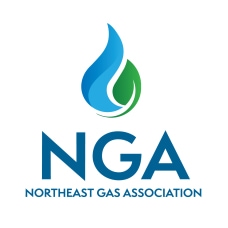PSMS Lessons Learned - Expect the Unexpected/Always Communicate - July 2024
PSMS Lessons Learned – July 2024
Expect the Unexpected - Always Communicate
Continuous communication is crucial when planning, managing, and working on construction projects. It can make the difference in avoiding unexpected or unplanned events. Continuous communication fosters collaboration, reduces risks, and improves overall project outcomes, making it a cornerstone of successful project management.
When planning and executing work for main installations and/or retirement projects, operators should always consider using "Pre-Mobilization Reviews," "On-Site Reviews/Pre-Job Briefs," and "Walking Down the Job." These activities provide additional controls and layers of protection to avoid unintended consequences.
For further guidance and information, refer to the Mains and Services Construction Tactical Guide and Mains & Services PSMS Quick Tips.

Description of Event:
A main replacement project underwent several revisions to the project scope due to field conditions discovered during the job. Upon retirement of the gas main, an unplanned supply interruption occurred, affecting fifteen customers. The project had extended further down a side street without accounting for the service transfers on that section of main.
Root Cause(s) and Contributing Factor(s):
Primary Causal Factor: The service transfer log was not updated to include additional services for the revised project scope.
- Root Cause: Work Direction – Preparation – Work Package/Permit Needs Improvement, including assessment of work scope management of change (MOC).
Secondary Causal Factor: Insufficient Pre-Retirement Confirmation Walk Down documentation during the review process.
- Root Cause: Work Direction – Preparation – Work Package/Permit Management of Change
Key Corrective Actions:
- Consider implementing a checklist via field technology asset management software to govern the required documents for the preretirement walkdown.
- Conduct a safety stand down with engineering and contract oversight departments to review incidents and importance of a thorough walk-down confirmation process.
- Conduct a Table-Top review of work package documents prior to retirement walkdowns.
- Update mapping to remove broken SOP Sketch link from GIS.
- Establish a hold point for defined scope changes that are reflected in the SOP and Service Transfer Logs. Update the Standard Operating Procedure for work scope and pre-retirement verification steps if necessary.
- Reassess the walkdown process with Engineering & Contractor oversight, defining roles & responsibilities for all parties involved in the service transfer process.
- Modify the existing service transfer log to include SOP revision numbers and final sign off for all parties involved with service transfers. Update procedures associated with Abandonment of Mains and services to include the modified service transfer log.
- Coordinate with Contractors to assess in-progress work packages to ensure updated transfer logs reflect current scope of work are included in onsite work packages.
- Communicate corrective actions to all performing organizations, including all in-house operational yards, contractor oversight organizations, and contractors.
Key Lessons Learned:
- All field execution procedure revisions and changes to a work package need to be accounted for in a timely matter and documented accordingly adhering to an approved MOC process.
- Full project scope reviews should be done on a recurring basis in pre-job briefs by all parties involved. Critical data, such as impacted services during main abandonment, associated with the work scope must be reviewed and confirmed.
- Constant communication between Engineers, Contractor Oversight, and Contractors is necessary on all main retirement and service transfer jobs to ensure changes to the work being performed are accurately accounted for and documented.
Plan-Do-Check-Act (PDCA) is at the very core of applying PSMS principles. In this Lessons Learned example, PDCA appears via:
1) Reviewing the Work Execution Plan prior to the start of daily work activities, including changes in scope;
2) Do Walk the job down to confirm the scope of abandonment and impacted services;
3) Checking that the visually confirmed services impacted align with the work execution plan; and,
4) Acting by pausing work if the work plan does not align with visual conformation of the work scope.
This is PSMS in action!!

